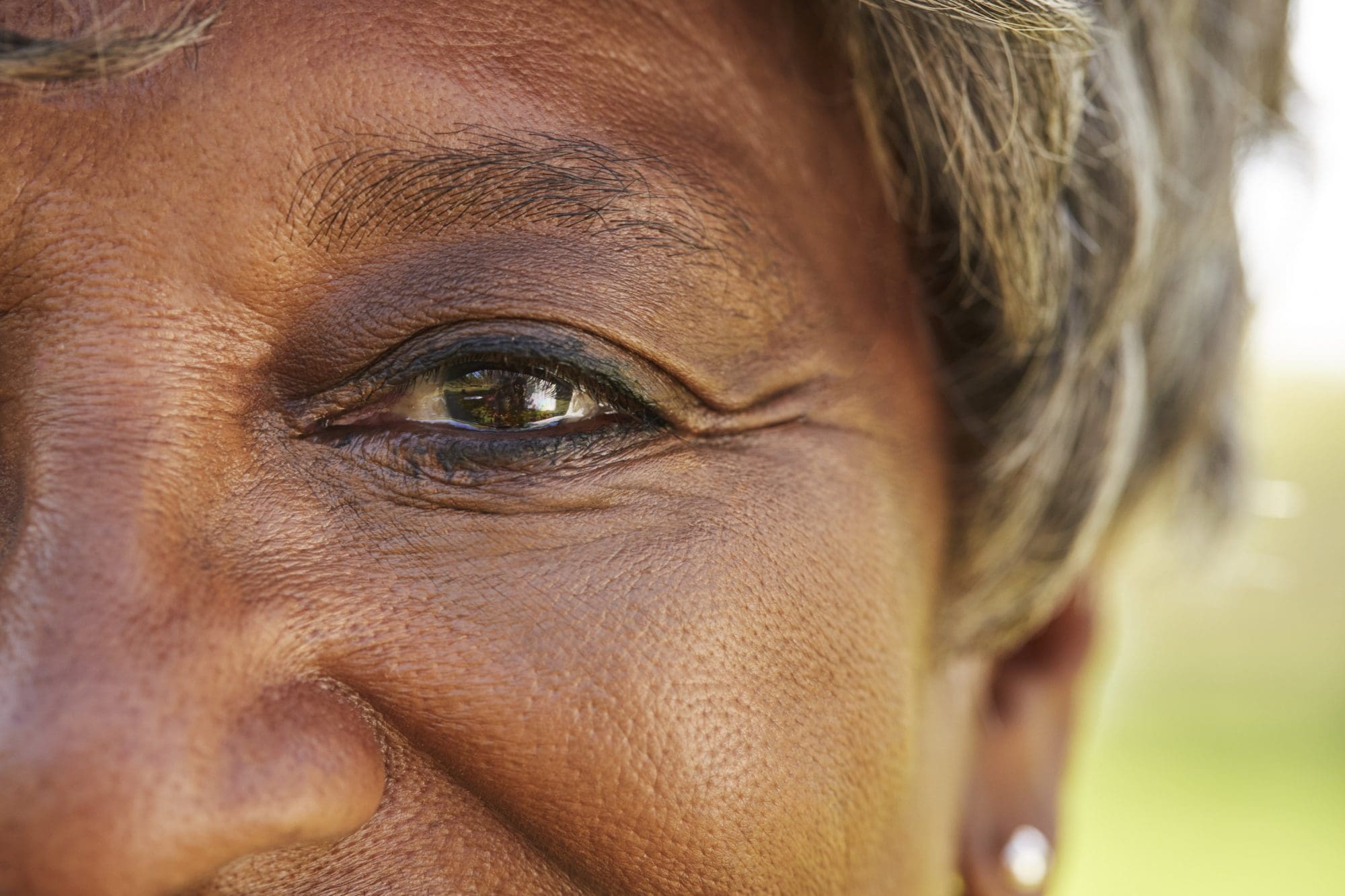When was the last time you went swimming? Remember diving into that cool, turquoise water surrounded by millions of tiny bubbles? For the few seconds beneath the surface, everything was a blur of shapes and light. Or, if you haven’t been swimming in a while, remember that one foggy morning you stepped outside to take the trash out? Everything was wreathed in murky gray light and even your hand looked a little fuzzy when you held it far enough away. The way our vision works is amazing. Light sends waves through the lens of our eyes which then bends it in a direction the eye can interpret. When our vision is impeded by water or fog, light is bent in a direction that makes it difficult to interpret what we are seeing. These are great examples of what it’s like to live with cataracts.
What Are Cataracts?
The lens of the eye is filled with a fluid that includes protein. As we begin to age, the proteins tend to “glob together,” forming little clumps. Over time, these become cataracts that block the eyes’ ability to see clearly. There are many types of cataracts, but the main three age related kind are Nuclear Sclerotic Cataracts, Cortical Cataracts, and Posterior Subcapsular Cataracts. Nuclear Sclerotic Cataracts are the most common type. The middle of the lens hardens slowly over time. The cataract begins by slowly hardening the middle of the lens. This is the most common form of cataracts and with Nuclear Sclerotic Cataracts, vision loss is usually gradual over a period of months or even years. Cortical Cataracts are most commonly found in people with diabetes. This protein build-up hardens the middle of the lens similar to Nuclear Sclerotic Cataracts, but spreads spidery veins like build-up across the lens scattering light and creating vision difficulties that include blurry eyesight, glare, and depth perception. Posterior SubcapsularCataracts are the fastest and most annoying form of cataracts. They are most commonly found in people who have diabetes, use steroids, or are very nearsighted. They form a small pocket beneath the lens capsule. This pocket distorts light creating a halo effect especially at night. People afflicted with these particular cataracts find night driving and reading very difficult and eventually lose the ability to do both due to their poor vision.
What Can Cataract Sufferers Do?
Cataracts are — at the very least — annoying. In the early stages of cataract development, wearing corrective lenses or getting better lighting throughout the house may be the best option for those who wish to see better. Anti-glare sunglasses are also helpful on days when lights might irritate your eyes. For those whose cataracts impede safe driving, watching TV, reading, and other important daily activities, surgery is the best option. This eye surgery is one of the most frequently performed surgeries in the USA and is very low risk. Talk to your doctor if you or your loved one feel this surgery is necessary now or in the future. The way our vision works is just another amazing facet of what makes us unique. Our eyes are one of the first ways we gather information about the world around us. Quick adjustments around the house like a new lamp or a trip to the eye doctor can make life easier for you or your loved one.
At Home Care provides expert services and peace of mind. Request a free consultation today.



